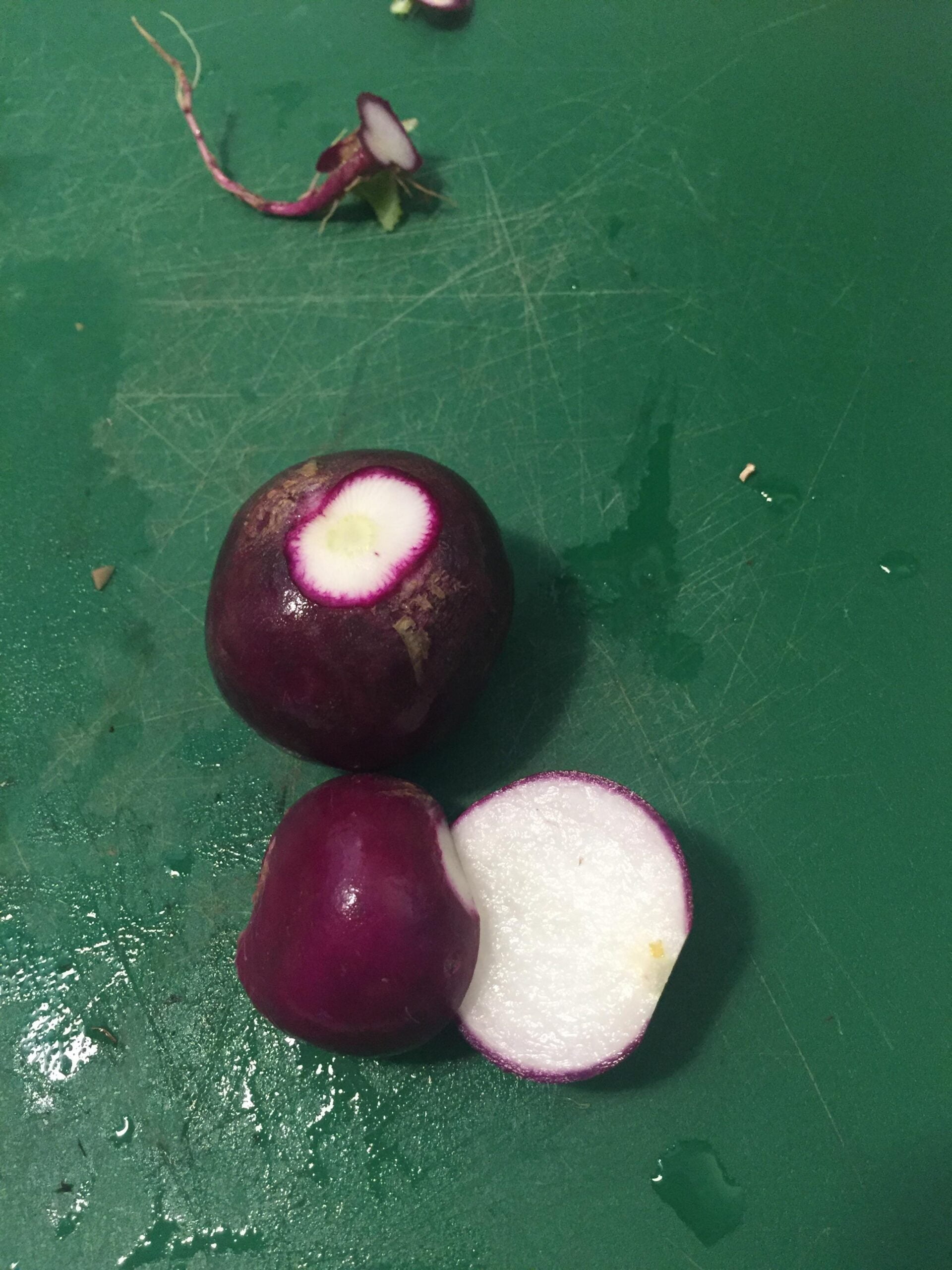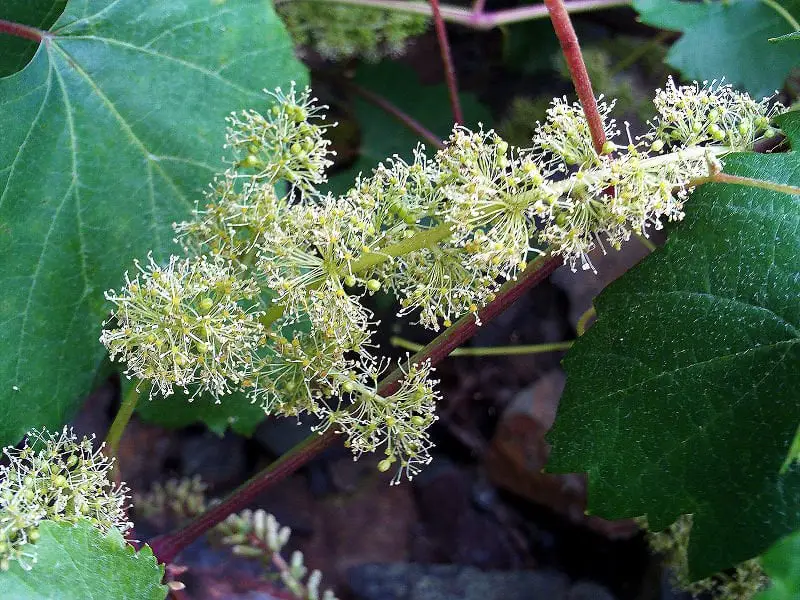Imagine biting into a crisp, vibrant radish and feeling an unexpected kick of heat awaken your taste buds. It’s a sensation that leaves you both bewildered and intrigued. So, what’s the secret behind the spicy nature of these humble root vegetables? In this article, we will explore the captivating science behind spicy radishes, unraveling the mystery behind their fiery flavor and the compounds that create their unique and invigorating taste. Get ready to embark on a mouth-watering journey as we uncover the fascinating secrets hidden within these fiery red globes.

The Anatomy of Radishes
The Radish Plant
When we talk about the anatomy of radishes, it’s important to start with the radish plant itself. Radishes are member of the Brassicaceae family, which also includes other cruciferous vegetables like broccoli and cauliflower. The plant consists of a leafy part, which is the portion that’s often harvested and consumed as sprouts or greens, and a root, which is the part we usually associate with radishes. The plant has vibrant green leaves that grow in a rosette pattern and a cylindrical root that varies in color, depending on the variety.
The Radish Root Anatomy
Now let’s dive deeper into the root anatomy of radishes. The root of a radish is made up of several layers. The outermost layer, known as the skin, is thin and usually red or white, depending on the variety. Beneath the skin, you’ll find the flesh of the radish, which can vary in color from white to pink to vibrant red. The flesh is crisp and juicy, with a distinct peppery or spicy flavor. As we explore the chemical compounds responsible for this spiciness, you’ll understand why radishes pack such a flavorful punch.
The Chemical Compounds in Spicy Radishes
Allyl Isothiocyanate (AITC)
One of the primary chemical compounds responsible for the spicy taste of radishes is allyl isothiocyanate, also known as AITC. AITC is a pungent, colorless oil that is released when radishes are cut or bitten into. It is particularly concentrated in the root of the radish and is what gives radishes their characteristic spicy kick. AITC is also found in other members of the Brassicaceae family, such as mustard and wasabi, contributing to their spiciness as well.
Capsaicinoids
While capsaicinoids are typically associated with chili peppers, they can also be found in spicy radishes. Capsaicinoids are a group of compounds that are responsible for the heat or “burn” sensation we experience when we consume chili peppers. In radishes, capsaicinoids are present in smaller quantities compared to chili peppers, but they still contribute to the overall spiciness of the radish.
Glucosinolates
Glucosinolates are another group of chemical compounds found in radishes that contribute to their spiciness. These compounds are responsible for the distinct aroma and taste of radishes, with some varieties having a more pungent flavor than others. When radishes are consumed, glucosinolates are broken down into various breakdown products, including AITC and other volatile compounds, which intensify the spiciness.
Sulfur Compounds
Sulfur compounds are yet another component that adds to the spiciness of radishes. These compounds, such as sulforaphane and dithiolthiones, contribute to the distinctive aroma and flavor of radishes. Sulfur compounds are not only responsible for the pungent smell associated with radishes but also play a role in their potential health benefits, which we’ll explore further later in this article.

The Role of Allyl Isothiocyanate (AITC)
Formation of AITC in Radishes
Now that we understand the different chemical compounds that contribute to the spiciness of radishes, let’s focus on the role of allyl isothiocyanate (AITC). AITC is produced in radishes through an enzymatic reaction that occurs when the plant’s tissue is damaged. When you slice into a radish or take a bite, the enzymes in the radish mix with the precursor compounds called glucosinolates, resulting in the formation of AITC.
AITC Receptors on Taste Buds
Once AITC is formed and released in the mouth, it interacts with specialized receptors on our taste buds. These receptors, known as TRPA1 receptors, detect the presence of AITC and send signals to the brain, resulting in the perception of spiciness or heat. This interaction between AITC and TRPA1 receptors is what gives radishes their characteristic spicy taste.
Effects on the Body
AITC not only creates a sensation of spiciness but also has various effects on the body. When consumed, AITC can increase blood flow, stimulate digestion, and trigger the release of certain hormones. It can also induce a mild inflammatory response, which can have both positive and negative effects depending on the individual and their overall health.
Health Benefits
Apart from providing a fiery flavor, AITC found in radishes also offers potential health benefits. Studies have suggested that AITC may have anti-inflammatory and anti-cancer properties. It has been shown to inhibit the growth of certain cancer cells and may help reduce the risk of certain types of cancers when consumed as part of a balanced diet. Additionally, AITC’s ability to stimulate digestion and increase blood flow can contribute to overall gastrointestinal health.
Capsaicinoids: More than Just Chili Peppers
Capsaicinoids in Radishes
While capsaicinoids are commonly associated with chili peppers, they can be found in radishes as well, although in smaller quantities. These compounds, such as capsaicin, contribute to the spiciness of radishes, albeit to a lesser extent than in chili peppers. The presence of capsaicinoids in radishes adds a unique heat sensation to their already peppery flavor.
Heat Perception
Capsaicinoids interact with a specific receptor in our body called the TRPV1 receptor, also known as the capsaicin receptor. When capsaicinoids bind to this receptor, it triggers a sensation of heat and pain, leading to the burning sensation often associated with chili peppers. This interaction is also what gives radishes their spicy kick, creating a sensation of warmth in the mouth.
Interaction with Nerves
The binding of capsaicinoids to the TRPV1 receptor not only creates a sensation of heat but also affects nerve signaling. This interaction can lead to the release of neurotransmitters that are involved in the perception of pain and can influence the release of endorphins, which are natural pain-relieving compounds. This complex interaction between capsaicinoids and nerves contributes to the overall sensory experience of consuming spicy radishes.
Thermogenesis and Metabolism
One interesting effect of capsaicinoids is their ability to increase thermogenesis, which is the production of heat by the body. When consumed, capsaicinoids can stimulate the body to burn more calories and fat, potentially contributing to weight management. This thermogenic effect can also increase metabolism, making it beneficial for individuals looking to boost their energy expenditure.

Glucosinolates and Their Pungency
Types of Glucosinolates in Radishes
Glucosinolates are a diverse group of compounds found in various cruciferous vegetables, including radishes. Different radish varieties contain different types and amounts of glucosinolates, which contribute to the distinct pungency and taste. Some common types of glucosinolates found in radishes include glucoraphanin, gluconasturtiin, and progoitrin. The presence of these compounds contributes to the overall spiciness and aroma of radishes.
Enzymatic Breakdown
When radishes are consumed, glucosinolates are enzymatically broken down by the enzyme myrosinase, which is naturally present in the vegetable. This breakdown process releases various volatile compounds, including AITC, which intensifies the pungency and spiciness of radishes.
Release of Pungent Compounds
The breakdown of glucosinolates into pungent compounds is not immediate but occurs gradually. As you chew or slice a radish, the process of enzymatic breakdown is initiated, and over time, more volatile compounds, including AITC, are released. This gradual release of pungent compounds contributes to the layers of flavor and intensity that make radishes such a unique and flavorful vegetable.
Anti-carcinogenic Effects
Aside from their role in adding spiciness to radishes, glucosinolates also exhibit potential anti-carcinogenic effects. Research suggests that the breakdown products of glucosinolates, including AITC, may help inhibit the growth of cancer cells and reduce the risk of certain types of cancers. However, it’s worth noting that more studies are needed to fully understand the mechanisms and scope of these potential anti-carcinogenic effects.
The Sulfur Connection
Sulfur in Radishes
Sulfur is an essential element that plays a crucial role in the overall flavor and health benefits of radishes. It is naturally present in radishes, primarily in the form of sulfur-containing compounds. These compounds contribute to the characteristic aroma and flavor of radishes, adding to their overall spiciness and pungency.
Alliin and Alliinase
One specific sulfur-containing compound found in radishes is alliin. Alliin is a precursor compound that reacts with an enzyme called alliinase when radishes are cut or chewed. This enzymatic reaction leads to the formation of pungent volatile compounds, including AITC, which contribute to the spicy flavor of radishes.
Formation of Pungent Volatile Compounds
The reaction between alliin and alliinase results in the formation of pungent volatile compounds, such as AITC and other sulfur-containing compounds. These compounds play a significant role in intensifying the spiciness and aroma of radishes, providing a unique sensory experience when consumed.
Potential Health Benefits
In addition to their contribution to the spiciness of radishes, sulfur-containing compounds also offer potential health benefits. Research suggests that these compounds may have antioxidant and anti-inflammatory properties, which can support overall health and well-being. Additionally, sulfur compounds are known to have antimicrobial properties, potentially aiding in immune function and protecting against certain pathogens.

The Influence of Environmental Factors on Spiciness
Temperature
Environmental factors, such as temperature, can have an impact on the spiciness of radishes. Cooler temperatures tend to promote the accumulation of glucosinolates and their breakdown products, leading to a more intense and pungent flavor. In contrast, warmer temperatures can result in less pungency and a milder taste.
Sunlight Exposure
Sunlight exposure also plays a role in the spiciness of radishes. Increased exposure to sunlight can lead to higher glucosinolate levels in the plant. These higher levels of glucosinolates contribute to a more pronounced spiciness and pungency in the radish roots.
Soil Quality
The quality of the soil in which radishes are grown can affect their spiciness. Radishes grown in nutrient-rich soil tend to have higher levels of glucosinolates, resulting in a spicier flavor. Additionally, soil pH can influence the availability of certain compounds and enzymes involved in the production of volatile compounds, further impacting the overall spiciness.
Irrigation
Proper irrigation is essential for the growth and development of radishes, and it can also affect their spiciness. Adequate moisture levels in the soil help maintain optimal conditions for glucosinolate production and enzymatic breakdown, ensuring a robust and spicy radish flavor. However, excessive irrigation can lead to diluted flavors and a less intense spiciness.
Cultivating Spicy Radishes
Choosing Spicy Radish Varieties
If you’re interested in growing spicy radishes, it’s important to choose the right variety. Some radish varieties naturally have a milder taste, while others pack a more potent punch. Look for varieties labeled as “spicy” or “hot” to ensure you get the spicy flavor you desire.
Optimal Growing Conditions
To cultivate spicy radishes, provide optimal growing conditions. Radishes thrive in well-drained soil that is relatively loose and rich in organic matter. They prefer a cool climate, so planting in early spring or fall is recommended. Be sure to provide adequate sunlight and water the plants regularly, keeping the soil consistently moist but not waterlogged.
Planting and Harvesting Tips
When planting radishes, sow the seeds directly into the ground at a depth of around half an inch. Space the seeds according to the specific variety’s instructions, as spacing can affect the root development and spiciness. Radishes are typically fast-growing, and they can be harvested when the roots reach the desired size, usually within a month of planting. For the spiciest radishes, consider harvesting them at a slightly smaller size, as younger roots tend to be hotter and more pungent.
Common Pest and Disease Management
Like any plant, radishes can be susceptible to pests and diseases. Keep an eye out for common culprits such as aphids, flea beetles, and root maggots. Implementing organic pest control methods, such as companion planting and insect-repelling herbs, can help deter pests. Additionally, practicing crop rotation and maintaining proper spacing can prevent the spread of diseases and ensure healthy, spicy radishes.

Culinary Uses for Spicy Radishes
Salads and Sandwiches
Spicy radishes can add a zesty kick to salads and sandwiches. Sliced or diced, they bring a refreshing heat and crunch to your favorite green salads or create a flavorful contrast in sandwiches. Their vibrant color and peppery flavor make them a delightful addition to any dish, brightening up the overall taste profile.
Pickling and Fermentation
If you’re looking to preserve the spicy goodness of radishes, pickling and fermentation are excellent methods. Sliced radishes can be pickled in a brine solution with added spices and herbs for a tangy, spicy pickle. Fermenting radishes can intensify their flavor while also promoting beneficial bacteria growth, adding an extra dimension of taste and potential health benefits.
Cooking Techniques
Radishes aren’t just meant for raw consumption. Cooking radishes through techniques like roasting, sautéing, or stir-frying can mellow their spiciness while imparting a unique flavor profile. When cooked, their natural sweetness emerges, creating a delicious balance with the remaining hints of heat and pungency.
Creative Recipes
Get adventurous with your culinary endeavors by experimenting with creative recipes that feature spicy radishes. From radish tacos and salsas to radish kimchi and radish leaf pesto, the possibilities are endless. Let your imagination run wild and discover exciting new flavor combinations by incorporating spicy radishes into your favorite dishes.
Radishes as a Natural Remedy
Traditional Medicinal Uses
Radishes have a long history of traditional medicinal use, which is often attributed to their natural spicy properties. In various cultures, radishes have been utilized to aid digestion, relieve congestion, and soothe sore throats. Their potent flavor and beneficial compounds make them a popular choice for natural remedies.
Potential Anti-inflammatory Properties
The compounds found in spicy radishes, such as AITC and sulfur compounds, may possess anti-inflammatory properties. These properties can potentially help reduce inflammation and alleviate symptoms associated with inflammatory conditions, such as arthritis and allergies. While further research is needed, spicy radishes show promise as a natural remedy for inflammation-related ailments.
Digestive Aid
Spicy radishes have long been recognized for their digestive benefits. The heat and pungency of radishes can stimulate the production of digestive enzymes, aiding in the breakdown of food and enhancing nutrient absorption. Additionally, the fiber content in radishes can promote regular bowel movements and support a healthy digestive system.
Incorporating Radishes into a Healthy Diet
To incorporate radishes into a healthy diet, consider including them in various dishes as part of a balanced meal plan. Their low-calorie content and high water content make them a refreshing addition to salads and vegetable platters. Their spiciness can also add depth and flavor to cooked dishes, such as stir-fries or roasted vegetable medleys. By enjoying radishes regularly, you can harness their potential health benefits while savoring their unique taste.
In conclusion, the spiciness of radishes is derived from a combination of chemical compounds, including AITC, capsaicinoids, glucosinolates, and sulfur compounds. These compounds contribute to the flavor, aroma, and potential health benefits associated with radishes. Understanding the anatomy of radishes, the role of each chemical compound, and the influence of environmental factors allows us to appreciate the science behind the spicy nature of this vibrant vegetable. Whether enjoyed raw, cooked, or pickled, spicy radishes add a delicious heat and zing to culinary creations while potentially offering various health perks. So the next time you bite into a peppery radish, savor the complexity of its spiciness and nourish your body with its fiery goodness.



